In this guide I’ll be taking a closer look at the best Sony E-mount macro lens options for both full-frame and APS-C shooters in 2025.
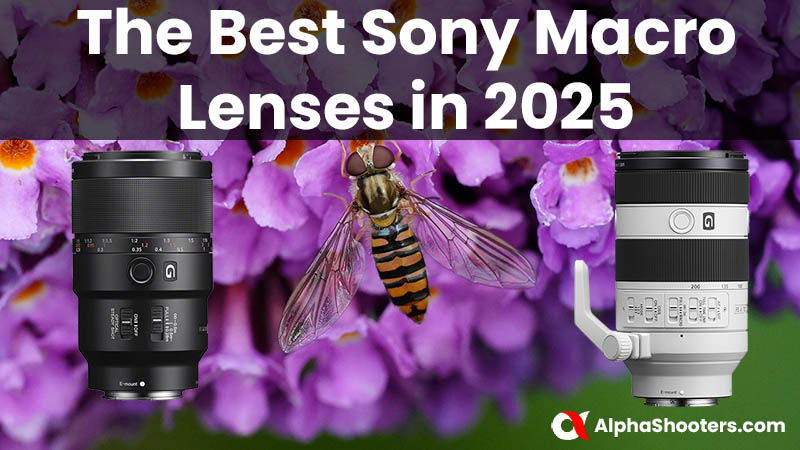
Table of Contents[Hide][Show]
Top 7 Full-Frame Macro Lenses
Here are my top 7 Sony full-frame macro lens recommendations for 2025.
1. Sony FE 90mm F2.8 Macro G OSS Lens
Despite being called a macro lens, the Sony FE 90mm f/2.8 Macro G OSS lens is also an excellent portrait lens and one of the sharpest lenses that Sony has ever built.
DxOMark reviewed this lens and said that its outstanding. It also scored higher marks than both the Canon and Nikon equivalents.
It is very hard to find fault with this lens but if I’m being very picky then AF performance could be faster and the manual focus ring adjustments could be finer for more precision.
The lens is constructed from 15 elements in 11 groups and has a 9 bladed circular aperture.
Being a macro lens it offers a magnification ratio of 1.0x and a minimum focusing distance of 0.92 ft (0.28 m). This lens also has optical stabilization built in.
For shooting portraits this lens is ridiculously sharp. So if you don’t want to show every spot, blemish and wrinkle on your model this lens probably shouldn’t be your first choice for portrait work.

If you are looking for a dedicated macro lens, or a lens that can combine both macro and portrait photography roles, then look no further than the 90mm F2.8 Macro G OSS lens.
I own this lens myself and love using it for macro work and the odd portrait.
Key Specs
| Model Name: | SEL90M28G |
| Format: | 35 mm full frame |
| Focal Length (mm): | 90 mm |
| Angle of View (35 mm): | 27° |
| Maximum Aperture: | F2.8 |
| Minimum Aperture: | F22 |
| Lens Groups / Elements: | 11/15 |
| Aperture Blades: | 9 circular |
| Minimum Focusing Distance: | 0.92 ft (0.28 m) |
| Maximum Magnification Ratio: | 1.0x |
| Lens Image Stabilization: | Yes |
| Filter Diameter: | 62 mm |
| Diameter: | 3-1/8″ / 79mm |
| Length: | 5-1/4″ / 130.5 mm |
| Weight: | 602 g / 1.33 lb |
Pros
- Incredible sharpness at all apertures
- Excellent color rendition
- Chromatic aberrations are well controlled
- very well built
- Price
Cons
- Autofocus isn’t the fastest
- Manual focus could allow for finer adjustments
What’s in the Box
- Sony FE 90mm F2.8 Macro G OSS lens
- Lens hood: ALC-SH138
- Lens front cap
- Lens rear cap
- Case
Review
If you’d like to learn more about the Sony FE 90mm F2.8 Macro G OSS lens then this review from Pav is well worth watching.
2. Tamron 90mm F2.8 Di III VXD Macro
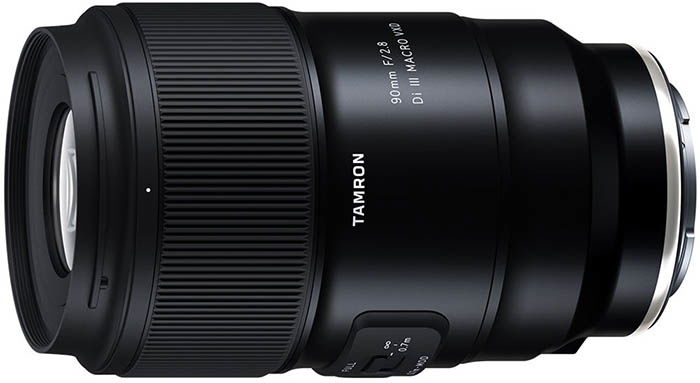
The Tamron 90mm F2.8 Di III VXD Macro lens is another excellent quality, budget friendly full-frame lens for Sony E-mount that was only launched in 2024.
The Sony FE 90mm f/2.8 Macro G OSS will set you back around $400 more than the Tamron lens.
The Tamron measures 127mm (5″) long and weighs in at 630g (22.2oz). This makes it just 28g heavier than the Sony 90mm Macro lens.
The additional weight is actually quite surprising because unlike Sony’s lens there is no stabilization built-in.
The lens features 15 elements in 12 groups, including four special glass low-dispersion elements. Tamron also says it has a ‘moisture-resistant construction’ and a Fluorine coating on the front element, which should help to provide some resistance to dust and oil.
The magnification ratio is 1:1 with a minimum focusing distance of 0.23m (9.1in).
The lens features the company’s first 12-blade circular aperture to ensure “the bokeh remains perfectly circular when the aperture is wide open.” There’s also a new lens hood that includes a ‘sliding window’ to allow you to easily adjust filters without removing the hood.
Like many of Tamron’s lenses you’ll find the popular 67mm filter thread size on this lens as well.
The 90mm F2.8 MACRO is also compatible with the Tamron Lens Utility software that allows various lens and camera settings to be assigned to the Focus Set Button located on the lens. Also, the lens’s firmware can be updated when necessary.
Key Specs
| Model Name: | F072 |
| Format: | 35 mm full frame |
| Focal Length (mm): | 90 mm |
| Angle of View (35 mm): | 27°2′ |
| Maximum Aperture: | F2.8 |
| Minimum Aperture: | F16 |
| Lens Groups / Elements: | 12-15 |
| Aperture Blades: | 12 circular |
| Minimum Focusing Distance: | 0.76 ft (0.23 m) |
| Maximum Magnification Ratio: | 1.0x |
| Lens Image Stabilization: | No |
| Filter Diameter: | 67mm |
| Diameter: | 3.12″ / 79.2mm |
| Length: | 4.98″ / 126.5mm |
| Weight: | 630 g / 1.39 lb |
Pros
- Well built and weather sealed
- Nicely priced
- Extremely fast autofocus
- Very good focus accuracy
- Low distortion
- Chromatic aberrations well controlled
- Very nice bokeh
- Excellent sharpness and loew coma
Cons
- No AF | MF switch
- Small amount of barrel distortion
- No stabilization
What’s in the Box
- Tamron 90mm f/2.8 Di III VXD Macro Lens (Sony E)
- Front Lens Cap
- Rear lens Cap
- Lens Hood
- Limited 6-Year Manufacturer Warranty
Review
If you’d like to learn more about the Tamron 90mm F2.8 Di III VXD Macro lens then this review from Gerald Undone is worth a watch.
3. Sigma 70mm F2.8 DG Macro Art Lens
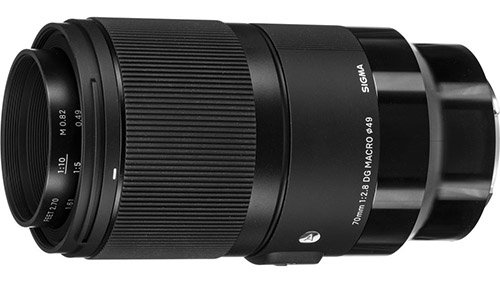
The Sigma 70mm F2.8 DG Macro lens was one of the first SLR lenses that Sigma decided to adapt to Sony E-mount, so this lens has not been built from the ground up for mirrorless cameras like some of their newer lenses.
The build quality is typical of Sigma’s ART Series and it’s very hard to find anything to complain about here.
Despite adapting this lens the optical quality is excellent and the colors it produces straight out of the camera are very pleasing indeed. Images are very sharp across the frame, chromatic aberration is well controlled as is distortion.

The autofocus motor unfortunately doesn’t get the same amount of love as the optical elements of this lens as it’s both slow and rather noisy. Still, I prefer to manual focus most of the time for macro photography and with the help of focus peaking the slow noisy AF isn’t really a problem.

Unlike the Sony 90mm F2.8 G lens the Sigma does extend as you focus but never past the lens hood. The minimum focusing distance is just 0.25m from the sensor so you will need to get pretty close to your subject for 1:1 shots, which might mean that your subject flies off before you hit the shutter button.
If the Sony FE 90mm F2.8 Macro G OSS lens is a little too expensive for you, then this lens is definitely worth considering.
Key Specs
| Model Name: | A018 |
| Format: | 35 mm full frame |
| Focal Length (mm): | 70 mm |
| Angle of View (35 mm): | 34.3° |
| Maximum Aperture: | F2.8 |
| Minimum Aperture: | F22 |
| Lens Groups / Elements: | 10-13 |
| Aperture Blades: | 9 circular |
| Minimum Focusing Distance: | 0.84 ft (0.258 m) |
| Maximum Magnification Ratio: | 1.0x |
| Lens Image Stabilization: | No |
| Filter Diameter: | 49mm |
| Diameter: | 2.8″ / 70.8mm |
| Length: | 5.2″ / 131.8mm |
| Weight: | 570 g / 1.26 lb |
Pros
- Extremely sharp
- Color rendition
- Chromatic aberration control
- Build quality
- Low price
Cons
- Autofocus slow and noisy
- Extends on focus
What’s in the Box
- Sigma 70mm f/2.8 DG Macro Art Lens for Sony E
- Sigma LCF-49 III 49mm Lens Cap
- Sigma LCR II Rear Lens Cap for Sony E
- Sigma LH708-01 Lens Hood
- Lens Case
- Limited 1-Year Manufacturer Warranty
Review
If you’d like to learn more about the Sigma 70mm F2.8 DG Macro Art lens then this review from Stefan Malloch is worth a watch.
4. Sony FE 70-200mm F4 Macro G OSS Ⅱ Lens
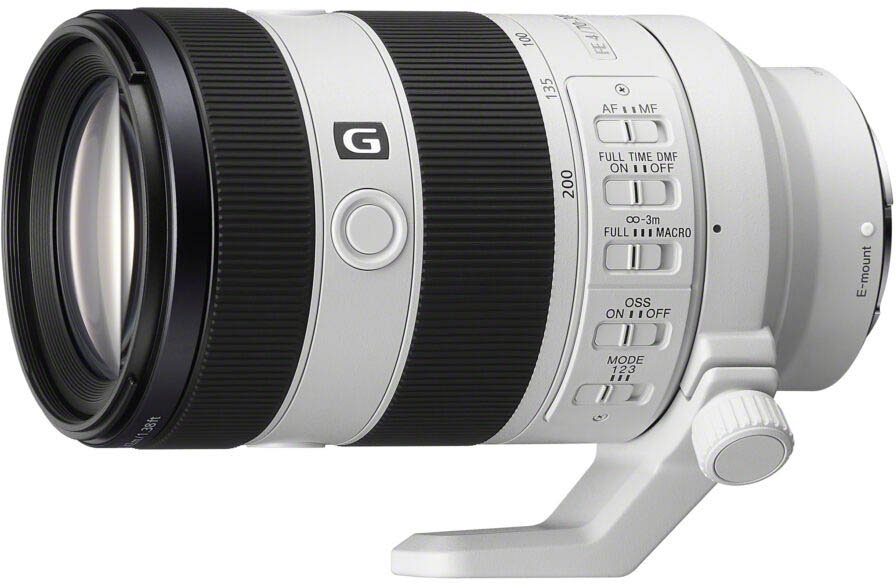
The Sony FE 70-200mm F4 Macro G OSS Ⅱ lens is the second generation of one of Sony’s earliest E-mount lenses first released in 2014.
Sony say that they have improved the AF by 20%. It’s also 15% lighter and 15% shorter that the Mark I. The 1.4x and 2x teleconverters are now also supported which were not supported with the Mark I lens.
Focus is powered by two independently moving focus groups driven by four XD ‘High thrust’ linear motors (two per group) which allow the lens to focus down to just 26 cm (10.2″).
A maximum magnification of 0.5x is the reason this lens has Macro in its name. Although not a true 1:1 macro lens if you attach the 2x teleconverter you will now have 1x magnification.
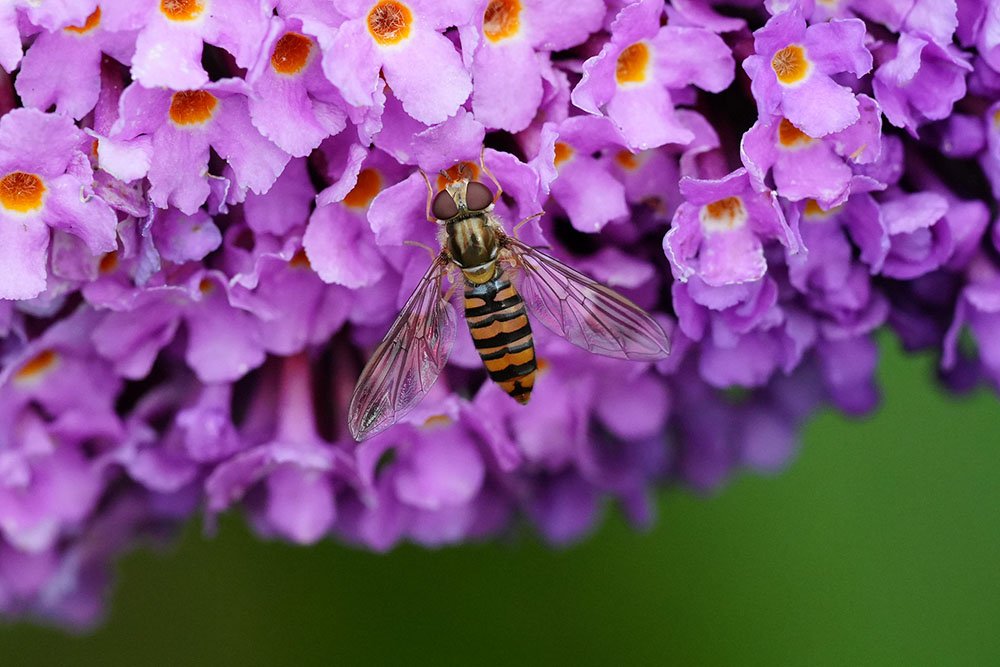
The lens is composed of 19 elements in 13 groups, including one advanced aspherical element, three extra-low dispersion (to reduce chromatic aberration), one ED aspherical element and one conventional aspherical lens.
On the lens body you’ll find independent control rings for focus and zoom. There’s a full-time DMF on/off switch, a focus-range limiter, Mode 1, Mode 2, and Mode 3 optical image stabilization, an AF/MF switch and a zoom lock.

Optically the lens delivers exceptional sharpness and contrast throughout the zoom range, low distortion and vignette and stunning bokeh.
I own both the Mark I and Mark II versions of this lens and hope to put together an in-depth comparison very soon. Until then you’ll just have to take my word that’s it’s definitely worth the upgrade!
Key Specs
| Model Name: | SEL70200G2 |
| Format: | 35 mm full frame |
| Focal Length (mm): | 70-200 mm |
| Angle of View (35 mm): | 34°-12° 30′ |
| Maximum Aperture: | F4 |
| Minimum Aperture: | F22 |
| Lens Groups / Elements: | 13-19 |
| Aperture Blades: | 9 circular |
| Minimum Focusing Distance: | 0.26-0.42 m(0.86-1.38 ft) |
| Maximum Magnification Ratio: | 0.5x |
| Lens Image Stabilization: | Yes |
| Filter Diameter: | 72 mm |
| Diameter: | 3-1/4″ / 82.2 mm |
| Length: | 5-7/8″ / 149 mm |
| Weight: | 794 g / 1.75 lb |
Pros
- Small and compact
- Good build quality and weather sealing
- Very fast and quiet autofocus motors
- Compatible with Sony’s 1.4x and 2x teleconverters
- Exceptional resolution and contrast throughout the zoom range
- Lovely bokeh
- Low distortion and vignette
- Flare resistance
- Minimal focus breathing
- Removable tripod collar
Cons
- Pincushion distortion throughout the zoom range
- Tripod foot not Arca-compatible (like all of Sony’s lenses)
- External zoom but this does make it more travel and backpack friendly
What’s in the Box
- Sony FE 70-200mm F4 Macro G OSS Ⅱ lens
- Lens hood: ALC-SH176
- Lens front cap: ALC-F72S
- Lens rear cap: ALC-R1EM
Review
If you would like to learn more about the Sony FE 70-200mm F4 Macro G OSS Ⅱ lens then I’d highly recommend this excellent review from Dustin Abbott.
5. Voigtlander 110mm f2.5 Macro Apo-Lanthar Lens
The Voigtlander 110mm F2.5 Macro APO Lanthar is an incredibly sharp macro lens that offers the Sony FE 90mm F2.8 G Macro lens a good run for its money. With a comfortable working distance of 17cm and superb build quality, this lens is most definitely on my wish list.
It is manual focus only but I don’t expect this will be an issue for many macro shooters who prefer to shoot manual anyway with the help of focus peaking.
Wide-open at f/2.5 and the lens is already incredibly sharp both centrally and even towards the edges of the frame.
Bokeh is very smooth and free from onion rings, although you will see some cat’s eyes which don’t really improve as you step-down. CA is extremely well controlled.
I don’t own this lens myself but I would do if money grew on trees.
Key Specs
| Model Name: | 103241 |
| Format: | 35 mm full frame |
| Focal Length (mm): | 110 mm |
| Angle of View (35 mm): | 22.6° |
| Maximum Aperture: | F2.8 |
| Minimum Aperture: | F22 |
| Lens Groups / Elements: | 14 lenses in 12 groups |
| Aperture Blades: | 10 |
| Minimum Focusing Distance: | 0.35 m |
| Maximum Magnification Ratio: | 1x |
| Lens Image Stabilization: | No |
| Filter Diameter: | 58mm |
| Diameter: | 78.4 mm |
| Length: | 99.7 mm |
| Weight: | 771 g / 1.70 lb |
Pros
- Excellent sharpness
- Build quality
- CA control
- Bokeh
Cons
- Vignetting
- Cat-eye bokeh balls
What’s in the Box
- Voigtlander MACRO APO-LANTHAR 110mm f/2.5 Lens for Sony E
- Front & Rear Lens Cap
- Lens Hood
- Limited 1-Year Manufacturer Warranty
Review
If you would like to learn more about the Voigtlander 110mm f2.5 Macro Apo-Lanthar lens then I’d recommend this review from Dustin Abbott.
6. Sigma 105mm F2.8 DG DN Macro Art Lens

The Sigma 105mm F2.8 DG DN Macro Art lens is another cracking lens from Sigma designed exclusively for mirrorless cameras.
The lens is incredible sharp across the frame with great contrast and color rendition and it displays practically no aberrations.
The build quality is excellent as you would expect from a Sigma Art series lens.
There is unfortunately no stabilization built into the lens body so if your camera doesn’t have IBIS built-in you will need to increase your shutter speeds for any moving subjects.
The only other downside to this lens is that the focus motor is not the quietest in town.
Key Specs
| Model Name: | A020 |
| Format: | 35 mm full frame |
| Focal Length (mm): | 105mm |
| Angle of View (35 mm): | 23.3° |
| Maximum Aperture: | F2.8 |
| Minimum Aperture: | F22 |
| Lens Groups / Elements: | 17 elements in 12 groups |
| Aperture Blades: | 9 rounded |
| Minimum Focusing Distance: | 29.5cm / 11.6in. |
| Maximum Magnification Ratio: | 1x |
| Lens Image Stabilization: | No |
| Filter Diameter: | 62mm |
| Diameter: | 74mm / 2.9in. |
| Length: | 135.6mm / 5.3in. |
| Weight: | 710 g / 1.56 lb |
Pros
- Excellent build quality
- Brilliant sharpness across the frame
- Great contrast
- Practically no aberrations
- Lovely smooth bokeh
- Great price
Cons
- No stabilization
- Autofocus motor isn’t as quiet as other macro lenses
What’s in the Box
- Sigma 105mm f/2.8 DG DN Macro Art Lens (Sony E)
- Sigma LCF-62 III 62mm Lens Cap
- Sigma LCR II Rear Lens Cap for Sony E
- Sigma Lens Hood
- Sigma Soft Lens Case
Review
If you would like to learn more about the Sigma 105mm F2.8 DG DN Macro Art lens then I’d recommend watching this very nice review from Christopher Frost.
7. Laowa 100mm F2.8 2x Ultra Macro APO Lens
The Laowa 100mm F2.8 2X Ultra Macro APO features 2:1 magnification that enables extreme closeup photography.
Despite the wallet friendly price this lens is well built and produces some very sharp images throughout the frame, even when shooting wide open at f/2.8.
Flare and ghosting isn’t so well handled and may prove to be a problem when shooting towards the sun.
Key Specs
| Model Name: | VE10028FE |
| Format: | 35 mm full frame |
| Focal Length (mm): | 100mm |
| Angle of View (35 mm): | 24.4° |
| Maximum Aperture: | F2.8 |
| Minimum Aperture: | F22 |
| Lens Groups / Elements: | 12 elements in 10 groups |
| Aperture Blades: | 13 |
| Minimum Focusing Distance: | 24.7cm / 9.72 in. (2X) |
| Maximum Magnification Ratio: | 2x |
| Lens Image Stabilization: | No |
| Filter Diameter: | 67 mm |
| Diameter: | 72 mm |
| Length: | 155 mm |
| Weight: | 638g / 1.4 lb |
Pros
- Sharp across the frame
- Price
- Build quality
Cons
- Flare
- Ghosting
What’s in the Box
- Venus Optics Laowa 100mm f/2.8 2X Ultra Macro APO Lens for Sony E
- Front Lens Cap
- Rear Lens Cap
- Lens Hood
- 67mm Clear Filter
- Limited 3-Year Manufacturer Warranty
Review
If you would like to learn more about the Laowa 100mm f/2.8 2X Ultra Macro APO lens then I’d recommend watching this excellent review from Micael Widell.
Price Check & Buyer Reviews for Laowa 100mm F2.8 2x Ultra Macro APO
At: Amazon | B&H Photo | Venus Lens
Top 3 APS-C Macro Lenses
Here are my top 3 Sony APS-C macro lens recommendations for 2025.
1. Sony E 30mm F3.5 Macro Lens
The Sony E 30mm F3.5 Macro APS-C lens is the most affordable E-mount macro lens available right now with a 1:1 magnification ratio.
This lens is well built, compact and light in weight but does not have optical image stabilization (OSS) built in, so unless you are using a camera with in-body stabilization (IBIS) like the a6700 you’ll need to use a higher shutter speed to compensate for camera shake if you are shooting hand-held.
30mm is quite a short focal length for a macro lens and with a minimum focusing distance of only 9.5cm you will need to be very close to your subject to get 1:1 magnification. This should be no trouble if your subject is not alive but for breathing subjects it might be quite the challenge. You will also start to block the light from reaching your subject when you are so close and also risk casting a shadow.
Central sharpness is very good at f/3.5 and improves down to f/8, whereas the edges are a little softer but for macro work where your subject is normally in the center of your frame this will probably be of no concern. CA is well controlled in the center of the frame, but could be better towards the edges where you will notice some color fringing in high contrast scenes. Flare is well controlled.
The autofocus is fast and quiet, which is definitely important if you don’t want to scare away your subject. Personally I prefer to use focus peaking and focus manually when shooting macro, as with the autofocus it’s always very difficult to nail focus on the eyes when shooting very small creatures like butterflies.
Unfortunately Sony decided to only offer this lens in silver color, there is no black option. If you are looking for a low cost APS-C macro lens then this is really your only choice right now unless you consider the full-frame options that I’m going to cover next.
Key Specs
| Model Name: | SEL30M35 |
| Format: | APS-C |
| Focal Length (mm): | 30mm |
| Angle of View (APS-C): | 50° |
| Maximum Aperture: | F3.5 |
| Minimum Aperture: | F22 |
| Lens Groups / Elements: | 7 elements in 6 groups |
| Aperture Blades: | 7 rounded |
| Minimum Focusing Distance: | 3.74″ / 9.5 cm |
| Maximum Magnification Ratio: | 1x |
| Lens Image Stabilization: | No |
| Filter Diameter: | 49mm |
| Diameter: | 62mm |
| Length: | 55.5 mm |
| Weight: | 138 g / 0.30 lb |
Pros
- Build quality
- Size
- Sharpness
- 1:1 magnification
- Price
Cons
- Edge sharpness is not the best
- No black color option
What’s in the Box
- Sony E 30mm f/3.5 Macro Lens
- Sony ALC-SH113 Lens Hood
- Sony ALC-F49S 49mm Front Lens Cap
- Sony ALC-R1EM Rear Lens Cap
Review
If you would like to learn more about the Sony E 30mm F3.5 Macro lens then I’d recommend watching this review from Arthur R.
2. 7artisans Photoelectric 60mm F2.8 Macro Mark II Lens
The 7artisans Photoelectric 60mm F2.8 Macro Mark II is a manual focus macro lens that has been designed for mirrorless cameras.
It offers a de-clicked aperture ring for smooth, silent rotation throughout the aperture range which will be helpful for video shooters. Unfortunately there is no electronic aperture control so the aperture can’t be controlled in-camera.
This is one of the most affordable macro lenses for Sony E-mount and it normally retails for around $179.
Key Specs
| Model Name: | A112-E-II |
| Format: | APS-C |
| Focal Length (mm): | 60mm |
| Angle of View (APS-C): | 26.4° |
| Maximum Aperture: | F2.8 |
| Minimum Aperture: | F22 |
| Lens Groups / Elements: | 11 elements in 8 groups |
| Aperture Blades: | 9 |
| Minimum Focusing Distance: | 6.9″ / 175 mm |
| Maximum Magnification Ratio: | 1x |
| Lens Image Stabilization: | No |
| Filter Diameter: | |
| Diameter: | 60 mm |
| Length: | 80.5 mm |
| Weight: | 339 g / 0.75 lb |
Pros
- Sharpness is fairly even across the frame
- Price
Cons
- Poor contrast
- Poor resistance to flare
- No electronic aperture control
What’s in the Box
- 7artisans Photoelectric 60mm f/2.8 Macro Mark II for Sony E
- Front Lens Cap
- Rear Lens Cap
- Limited 1-Year Manufacturer Warranty
Review
If you would like to learn more about the 7artisans Photoelectric 60mm F2.8 Macro Mark II lens then I’d recommend this excellent review from Micael Widell.
3. Laowa 65mm f/2.8 2x Ultra Macro APO Lens
This is the first macro lens that Venus Optics designed specifically for APS-C mirrorless cameras like the Sony a6700.
This lens is also the only APS-C macro lens in the market that is capable of producing 2X life-size images for mirrorless cameras.
You won’t find an autofocus motor in this lens, both the focusing and aperture control is manual only. But with the help of Sony’s focus peaking you shouldn’t have any trouble nailing the focus on your subject, unless it’s moving fast!
The lens has excellent build quality and is very sharp wide-open at f/2.8 in the center even at 2x. The corners are a little softer wide-open but soon sharpen up at f/4. At 2x magnification the lens does start to get softer at f/5.6.
Chromatic aberration, distortion and vignetting are very well controlled even at f/2.8 although the lens is prone to flaring.
Key Specs
| Model Name: | VE6528SE |
| Format: | APS-C |
| Focal Length (mm): | 65mm |
| Angle of View (APS-C): | 24.4° |
| Maximum Aperture: | F2.8 |
| Minimum Aperture: | F22 |
| Lens Groups / Elements: | 14 elements in 10 groups |
| Aperture Blades: | 9 |
| Minimum Focusing Distance: | 6.69″ / 17 cm |
| Maximum Magnification Ratio: | 2x |
| Lens Image Stabilization: | No |
| Filter Diameter: | 52mm |
| Diameter: | 57mm |
| Length: | 100mm |
| Weight: | 335g / 0.74 lb |
Pros
- Very good optical performance
- Nice manual focus ring
- Good build quality
- Great price
- No visible CA
- Low distortion and vignette
- Lovely bokeh
Cons
- No electronic contacts
- Prone to flare
- No weather sealing
- No autofocus
What’s in the Box
- Venus Optics Laowa 65mm f/2.8 2x Ultra Macro APO Lens for Sony E
- Front Lens Cap
- Rear Lens Cap
- Limited 3-Year Manufacturer Warranty
Review
If you would like to learn more about the Laowa 65mm f/2.8 2x Ultra Macro APO lens then I’d recommend another first class review from Micael Widell.
Price Check & Buyer Reviews for Laowa 65mm F2.8 2x Ultra Macro APO
At: Amazon | B&H Photo | Venus Lens
Macro Lens Buying Tips
Although lens sharpness is important when it comes to macro photography there are three other very important aspects to consider when purchasing a macro lens.
Magnification Ratio
The magnification ratio is the relationship between of the size of the subject that is being projected on your cameras sensor and the subject’s size in reality.
For example, if I shoot a butterfly that measures 3cm and its projection on the sensor measures 3cm as well, then the magnification is 1:1. Macro photography generally means shooting at a magnification ratio of at least 1:1.
Minimum Focusing & Working Distance
The minimum focusing distance is the minimum distance between your subject and your cameras sensor required for it to focus correctly, whereas the working distance is the distance between your subject and the end of the lens.
You’ll typically want a minimum focusing distance that gets you close enough to your subject to achieve a 1:1 magnification, but ideally with a working distance that isn’t going to block light from reaching your subject, cast a shadow, or frighten your subject away.
Focal Length
A macro lens with a longer focal length like 70-110mm will bring you very close to your subject but will sacrifice the surrounding environment, which may or may not be what you want. A smaller focal length allows you to include more of the environment in your shot to display a wider perspective. It really comes down to what you want to achieve.
Complete List of Sony E-mount Lenses & Latest Firmware
Please visit my Sony E-Mount Lenses List for a complete list of Sony E-mount lenses including third-party lenses along with the latest firmware versions.


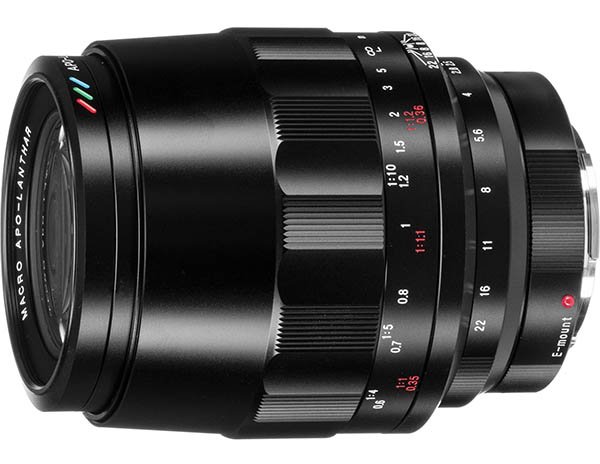

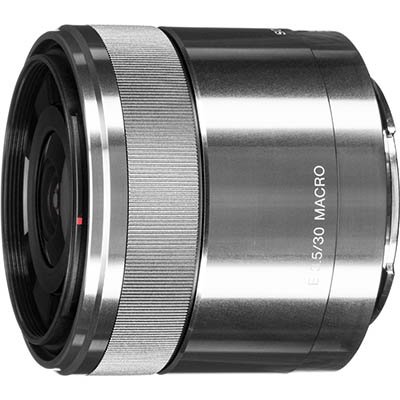

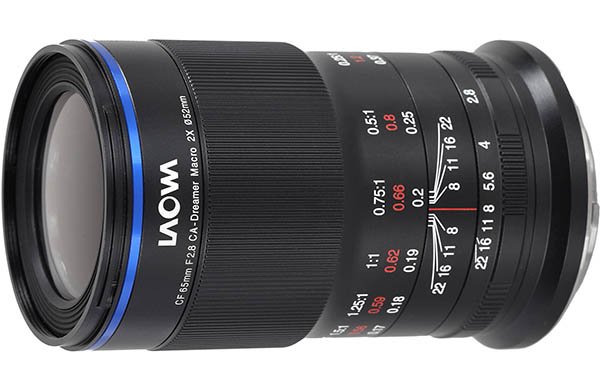
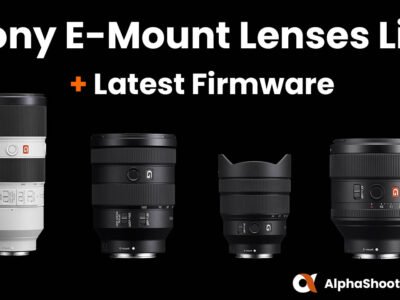

Excellent review of the lenses you chose to include, Timothy! My question concerns another Macro lens for Sony Mirrorless APS-C cameras, the ZEISS Touit 50mm f/2.8M Macro Lens. Did you not include because you believe (or found,) it to be inferior to the three other lenses you reviewed, or was there another reason?
I intend to purchase a Macro lens to use with both my Sony a6600 and full spectrum-converted Sony a6700 cameras. When employing it for close-up subjects, I will probably use a tripod, but for landscape photography, I may not. For what it might be worth, I have limited experience in doing macro photography; I do have a Sigma 50 mm f/2.8 A-mount Macro lens (on a Sony A65 SLT camera,) which I’ve used sparingly for the past 15 years.
Thanks for taking the time to respond!
lev29
I have the 90mm macro lens for my fieldwork Sony A7rii science the beginning 2016. I am currently using a 50mm f1.8 for my daily underwater photography. The 90mm macro lens is too long for my underwater case \ dome port, it’s a simple but good seafrog-housing. For fish photography the 50mm f1.8 is great, but i would like to start with UW macro again & I am desperately looking for a shorter macro lens with auto focus.
Since you have the 90mm macro already, you may want to purchase the seafrogs long port. I think it’s only about $150 USD and may be a cheaper option than a new lens. The other options is the Sony FE 50 mm F2.8 Macro Lens, bit I think your result would be best with the 90mm.
I am using the Tamron 60mm f2.0 Macro for A-mount with the Sony LA-EA5 adapter on my A7CII. Not sure if there is a good UW case for it, but it works great and seems to not have any vignetting on a full frame camera, despite it being marketed as an APS-C lens.